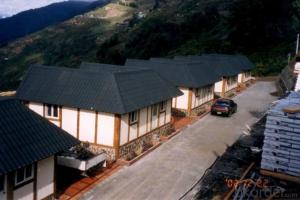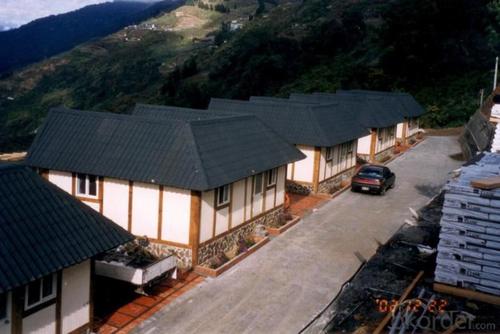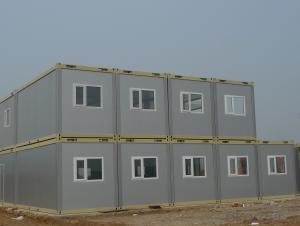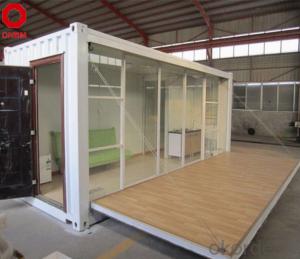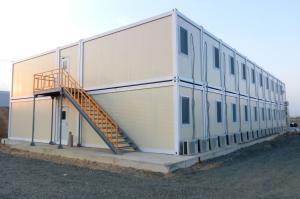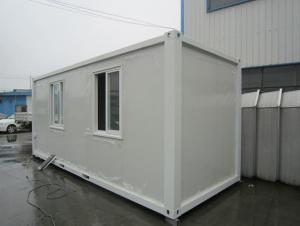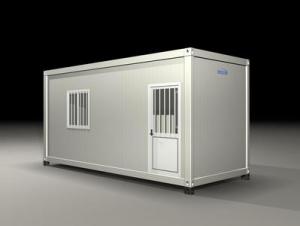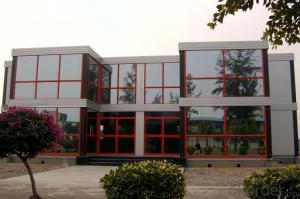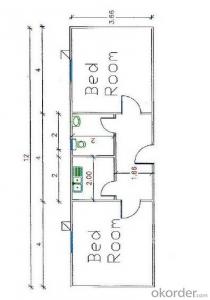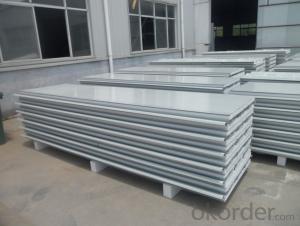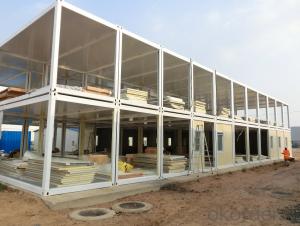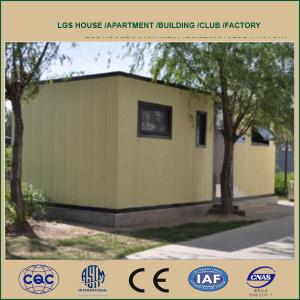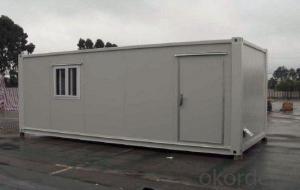Container Villa House
- Loading Port:
- China Main Port
- Payment Terms:
- TT OR LC
- Min Order Qty:
- -
- Supply Capability:
- -
OKorder Service Pledge
OKorder Financial Service
You Might Also Like
Container Villa House
Description
The container house is movable as a whole unity. This kind of container house is reusable usually as offices in domestic areas other than as habitable houses. Using a kind of 1150 modulus design, with security nets, doors and floor tile, its firm and safe. Cabinet unit structure for the introduction of steel and cold-formed steel welded together to make up standard components. The house can be designed just as just one unit or connected to a whole from several boxes, by simple connection such as bolts. Easy to assemble.
Container house has a wide range of applications. It can be used in temporary construction site, commercial industry, civil, military and other fields.
Technical Parameters
1).Designed and developed according to the standard size of shipping container;
2).Heatproof and waterproof;
3).Widely used as office, meeting room, dormitory, shop, booth, toilet, storage, kitchen, shower room, etc.
4).Size: 6058 * 2435 * 2790mm;
5).Components: adopts EPS, PU, or rock wool as heat insulation material;
6).All the components of the container house are up to standard and prefabricated with the advantage of easy installation and uninstallation.
7).Easy assembly and disassembly: Only six skilled workers are needed to finish three modular units in 8 hours;
8).One 40ft HQ container can load six sets of 5,950 x 2,310 x 2,740mm standard units or six sets of 6,055 x 2,435 x 2,740mm standard units;
9).The standard unit can be connected together at any direction or stack up to two or three stories;
10).Waterproof design of structure, fireproof, and heat insulation of material ensure the house to resist heavy wind load of 1.5kN/m2 and 7° seismic intensity;
11).Lifespan of the house: 20 to 25 years.
Advantage & Basic Design
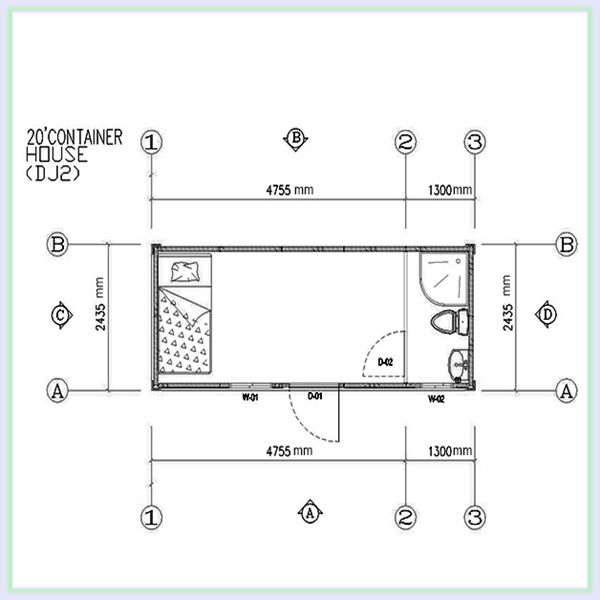
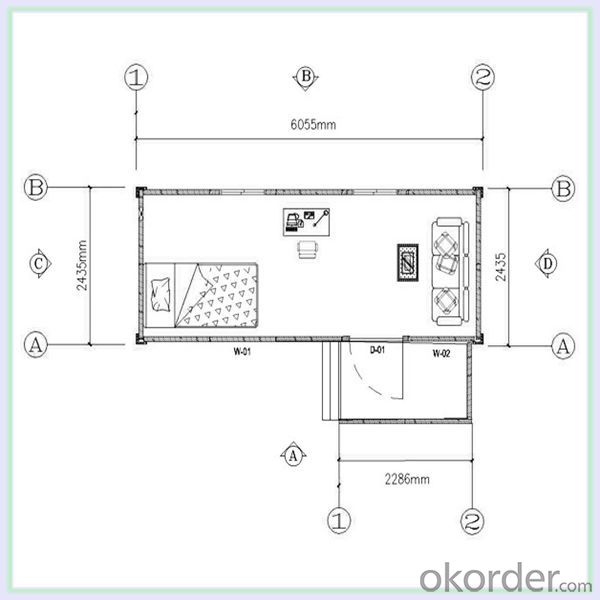
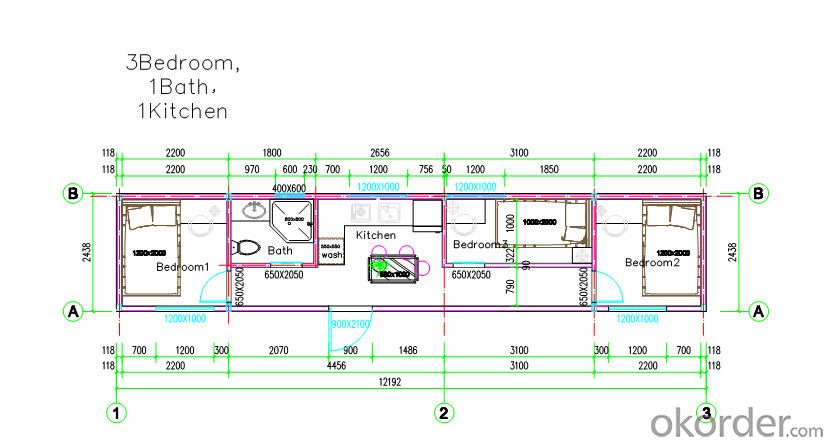
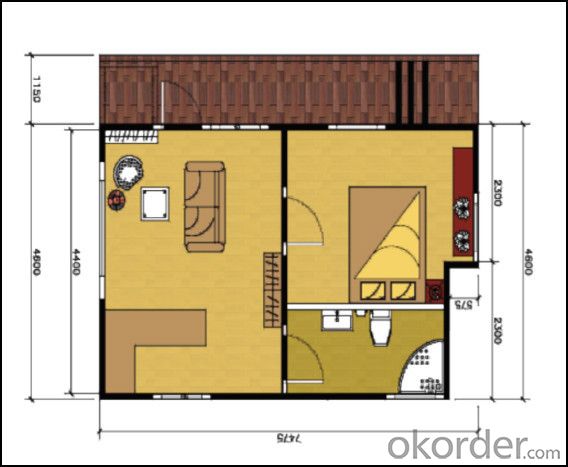
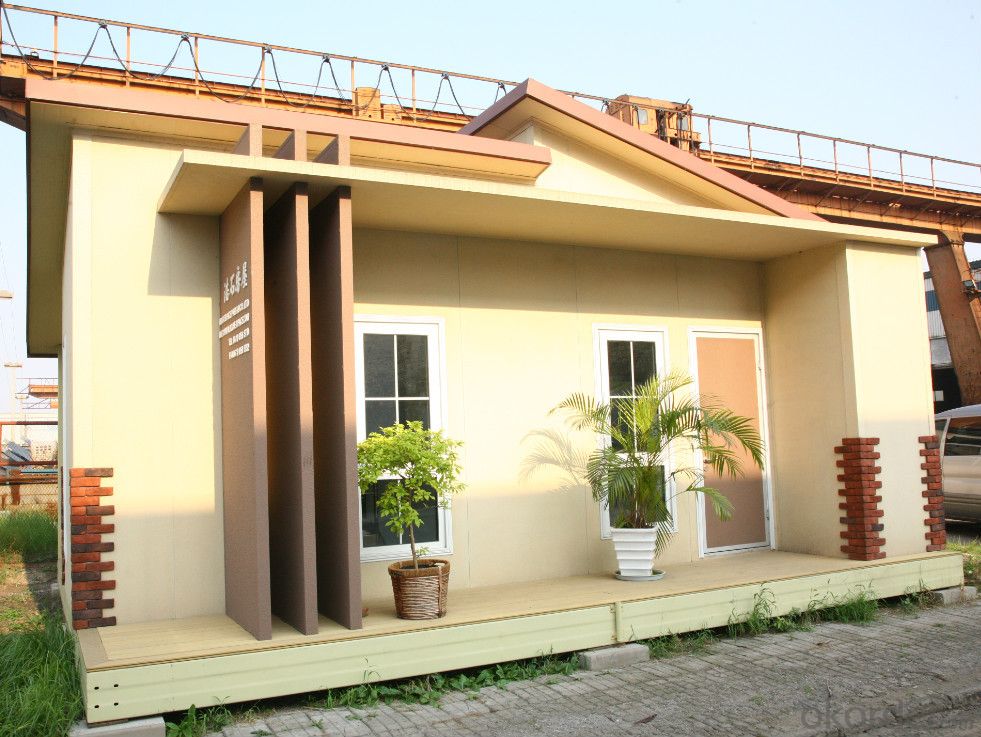
| Construction Efficiency | 2 worker in one day for one unit |
| Long life time | Max. 20 years |
| Roof load | 0.5KN/sqm (can reinforce the structure as required) |
| Wind speed | designing wind speed: 210km/h (Chinese standard) |
| Seismic resistance | magnitudes 8 |
| Temperature | suitable temperature.-50°C~+50°C |
Factory & Shippment
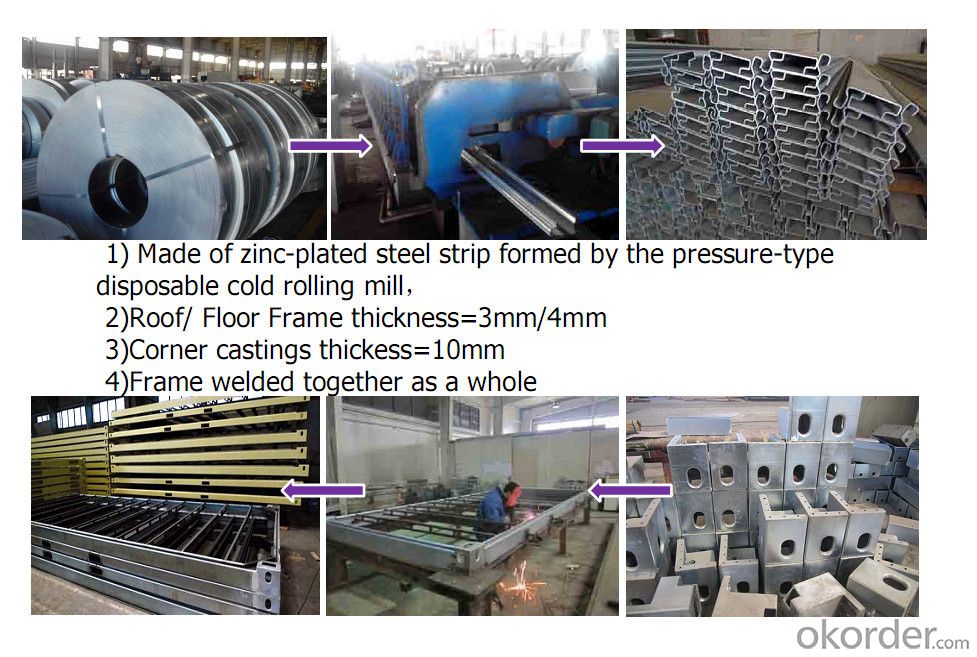

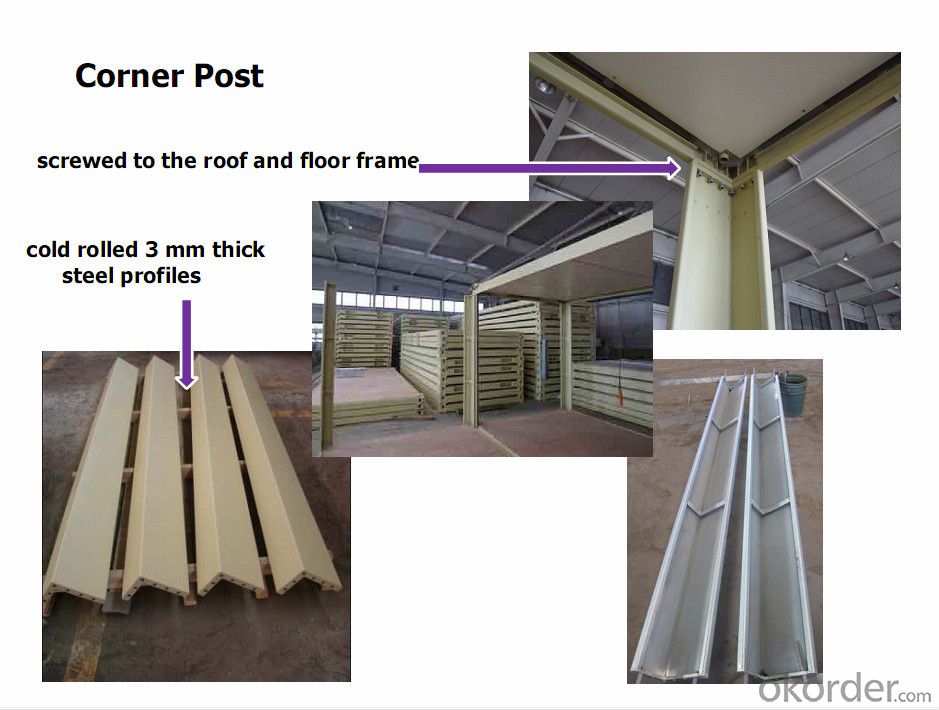
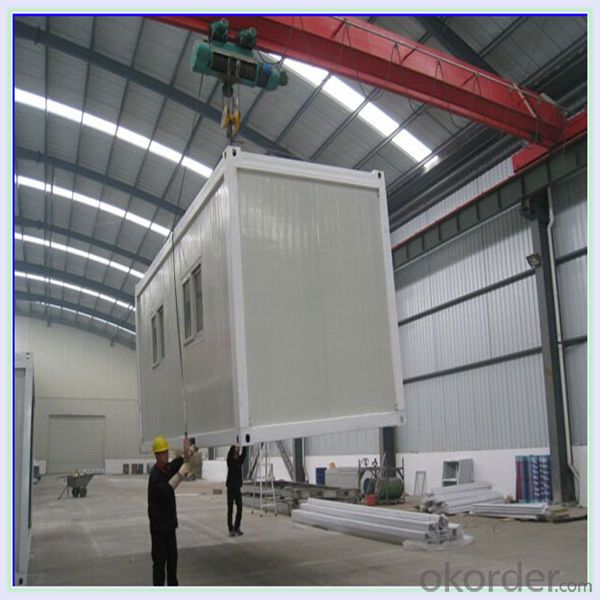
Application
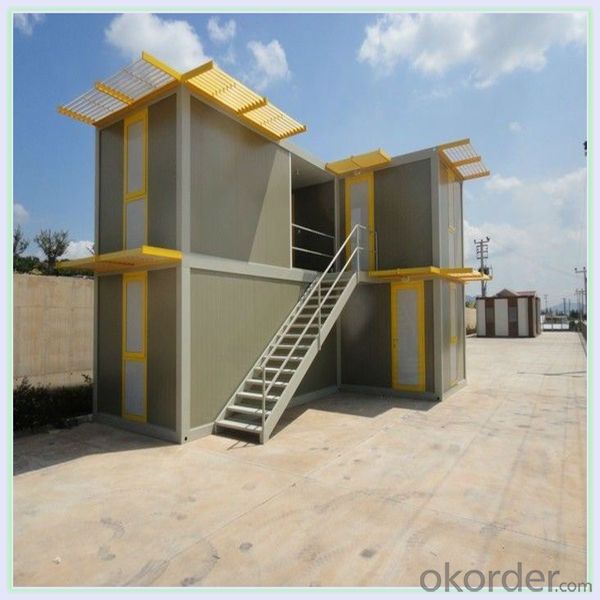
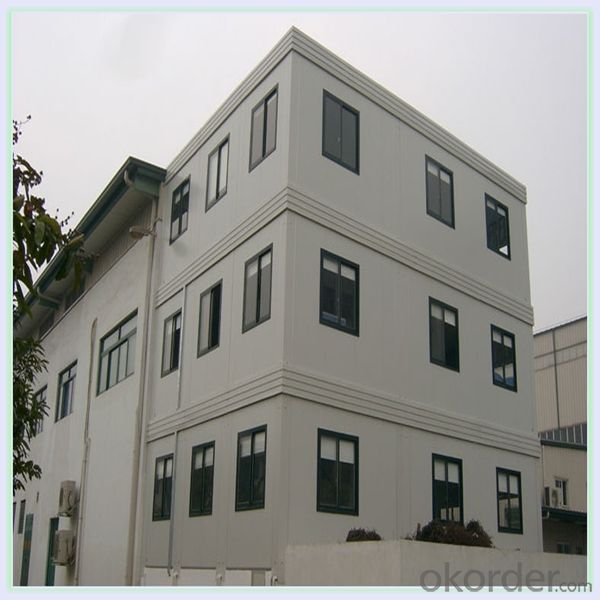
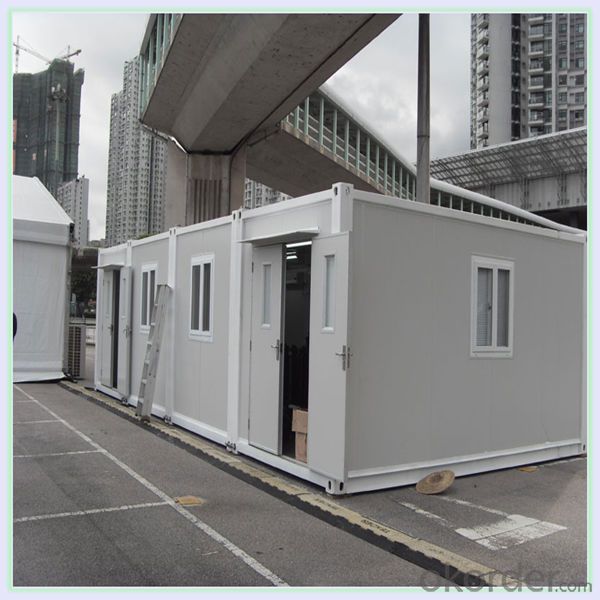
- Q: Are container houses suitable for temporary or mobile structures?
- Container houses are an excellent choice for temporary or mobile structures due to their design and construction. The durability, weather-resistance, and ease of transport of containers make them ideal for such purposes. Containers are constructed to withstand various conditions and can be easily transported by truck, train, or ship due to their standardized size and structure. This mobility enables container houses to be effortlessly transported and set up in different locations, making them a perfect solution for temporary housing or mobile structures like offices, pop-up shops, or even disaster relief shelters. Furthermore, container houses can be assembled and disassembled quickly, reducing construction time and costs. They also offer flexibility in terms of design and layout, allowing for customization and adaptation to different needs and spaces. Overall, container houses are a practical and efficient choice for temporary or mobile structures.
- Q: Can container houses be designed for outdoor recreational areas?
- Yes, container houses can be designed and built for outdoor recreational areas. Container houses offer versatility in design and can be customized to fit specific purposes, including outdoor recreational areas. They can be modified with various features such as outdoor decks, swimming pools, or even integrated into larger recreational complexes. Container houses are durable and weather-resistant, making them suitable for outdoor environments.
- Q: Can container houses be designed for hurricane-prone areas?
- Yes, container houses can be designed for hurricane-prone areas. While shipping containers are inherently strong and structurally sound, additional modifications and reinforcements can be made to ensure their ability to withstand hurricane-force winds and other extreme weather conditions. Some of the key design considerations for container houses in hurricane-prone areas include: 1. Foundation: A solid and well-engineered foundation is crucial to provide stability and prevent the container house from being easily displaced during high winds. Options such as concrete or steel piers can be used to anchor the structure. 2. Structural reinforcements: Additional steel framing can be added to strengthen the container's structural integrity. Reinforced corner posts and beams can be installed to enhance the overall strength of the house. 3. Roofing and siding: The choice of roofing and siding materials is important in hurricane-prone areas. Strong and durable materials like metal or reinforced concrete can be used to withstand high winds and flying debris. 4. Wind-resistant windows and doors: Impact-resistant windows and doors are essential to prevent wind pressure from entering the house and causing structural damage. These windows and doors are made from laminated glass or polycarbonate materials that can withstand hurricane-force winds. 5. Proper insulation and ventilation: Adequate insulation and ventilation systems are necessary to maintain a comfortable indoor environment. Proper insulation helps to regulate the temperature, while well-designed ventilation systems ensure proper air circulation without compromising the structure's integrity. 6. Elevation and drainage: Raising the container house above ground level can provide additional protection against flooding caused by storm surges. Proper drainage systems should also be implemented to prevent water accumulation around the structure. It is important to note that designing container houses for hurricane-prone areas requires the expertise of architects, engineers, and builders with experience in building resilient structures. By implementing these design considerations, container houses can be made highly resistant to hurricanes and provide safe and durable housing solutions in these areas.
- Q: Can container houses be designed for communal living?
- Yes, container houses can certainly be designed for communal living. Container houses have emerged as a popular alternative to traditional housing due to their affordability, sustainability, and flexibility. Their modular design allows for easy customization and adaptation to various living arrangements, including communal living. Container houses can be designed to accommodate multiple individuals or families by connecting multiple containers together or stacking them vertically. This allows for the creation of shared spaces such as communal kitchens, dining areas, living rooms, and recreational facilities. By utilizing open floor plans and maximizing the use of natural light, container houses can be transformed into spacious and inviting communal living environments. Furthermore, container houses can be equipped with all the necessary amenities and facilities required for communal living. These can include shared bathrooms, laundry rooms, storage spaces, and outdoor communal areas. With proper insulation, climate control, and soundproofing measures, container houses can provide a comfortable and functional communal living experience. Additionally, container houses can be designed with sustainability in mind, incorporating eco-friendly features such as rainwater harvesting systems, solar panels, and energy-efficient appliances. This further enhances the appeal of container houses for communal living, as it promotes a sustainable and eco-conscious lifestyle. In conclusion, container houses are versatile and can be effectively designed for communal living. Their modular nature, affordability, and sustainability make them an attractive option for individuals or groups seeking an alternative housing solution that promotes shared living experiences.
- Q: Are container houses suitable for artist residencies or creative spaces?
- Container houses can be a perfect fit for artist residencies or creative spaces due to their unique features and benefits. Firstly, container houses offer a cost-effective solution for artists and organizations with limited budgets. As these structures are made from repurposed shipping containers, they often come at a fraction of the cost of traditional building materials. This affordability allows artists to allocate more resources towards their creative endeavors. Secondly, container houses are highly versatile and customizable. Artists can easily modify the layout and design of these structures to suit their specific needs and preferences. Whether it's adding windows for natural light, creating open spaces for exhibitions or workshops, or dividing the space into separate studios, container houses can be adapted to accommodate various artistic practices. Additionally, container houses are eco-friendly and sustainable. By repurposing shipping containers, artists contribute to reducing waste and promoting a more sustainable way of living. This can align with the values of many artists who prioritize environmental consciousness in their work. Container houses also offer a unique aesthetic appeal that can enhance the creative atmosphere of an artist residency or creative space. The industrial look and feel of these structures can inspire and stimulate creativity, setting the tone for a unique artistic experience. Moreover, container houses can be easily transported and relocated. This portability allows artists to establish residencies or creative spaces in different locations, providing them with new surroundings and inspirations. It also enables collaborations between artists from different regions, fostering a diverse and vibrant creative community. However, it is important to consider the limitations of container houses when considering them for artist residencies or creative spaces. These structures may have limited interior space, which can be challenging for those requiring larger workspaces or specific equipment. Additionally, insulation and climate control may be necessary to ensure comfortable living and working conditions throughout the year. In conclusion, container houses can be highly suitable for artist residencies or creative spaces. Their affordability, versatility, sustainability, and unique aesthetic appeal make them an attractive option for artists and organizations looking for innovative and cost-effective solutions to support their artistic practices.
- Q: Are container houses suitable for areas with limited access to grocery stores?
- Container houses are a viable choice for areas lacking convenient access to grocery stores. These houses are specifically designed to be self-sufficient and can offer a range of amenities to fulfill residents' requirements. For instance, a compact kitchen area can be incorporated into the design, enabling residents to store and prepare food. Moreover, container houses can also be equipped with a water filtration system to ensure a clean water supply. Additionally, these houses can be constructed with a small garden or rooftop space, allowing residents to cultivate their own vegetables and fruits, thereby reducing their dependence on grocery stores. In summary, container houses offer an effective and sustainable solution for areas with limited access to grocery stores, empowering residents to have greater control over their food supply.
- Q: Can container houses be built with a home gym or exercise area?
- Yes, container houses can definitely be built with a home gym or exercise area. Container houses are versatile and can be customized according to individual preferences and needs. With proper planning and design, a section of the container house can be dedicated to a home gym or exercise area. The container can be modified to include features such as reinforced flooring, mirrors, specialized lighting, and storage for exercise equipment. Additionally, windows or skylights can be incorporated to allow for natural light and ventilation. The compact nature of container houses also makes it easier to create a well-equipped and functional exercise space within a smaller footprint. Therefore, container houses offer a great opportunity to combine a comfortable living space with a dedicated area for fitness and exercise.
- Q: Are container houses suitable for eco-resorts or eco-retreats?
- Yes, container houses are suitable for eco-resorts or eco-retreats. Container houses have gained popularity in sustainable and eco-friendly architectural designs due to their low impact on the environment. They can be easily repurposed, offer energy efficiency, and reduce construction waste. Additionally, container houses can be designed to blend with the natural surroundings, further enhancing the eco-resort or eco-retreat experience.
- Q: Can container houses be designed to be wheelchair accessible?
- Yes, container houses can be designed to be wheelchair accessible. With careful planning and modifications, container homes can be made to accommodate the needs of wheelchair users. This can include wider doorways, ramps, accessible bathrooms, and other features that ensure ease of movement and functionality for wheelchair users within the container house.
- Q: Are container houses suitable for mobile clinics or medical facilities?
- Yes, container houses are suitable for mobile clinics or medical facilities. Container houses, also known as shipping container conversions, offer various advantages that make them ideal for this purpose. Firstly, container houses are highly customizable and can be designed and built to meet specific medical requirements. They can be modified to include separate examination rooms, waiting areas, laboratory spaces, and even surgical units. This flexibility allows for the efficient use of space and ensures that the container can accommodate the necessary medical equipment and personnel. Secondly, container houses are easily transportable. They are designed to withstand the rigors of shipping, making them sturdy and durable for long-distance transportation. This mobility is particularly beneficial for setting up medical facilities in remote or disaster-stricken areas, where access to healthcare services may be limited. Furthermore, container houses are cost-effective. Compared to constructing a traditional building, converting a shipping container into a medical facility can significantly reduce construction costs. Containers are readily available and can be repurposed, which can save both time and money. Additionally, container houses are sustainable and environmentally friendly. By repurposing shipping containers, we reduce waste and make use of existing resources. Moreover, containers can be equipped with renewable energy sources like solar panels, making them self-sufficient and reducing their environmental impact. Overall, container houses offer a practical solution for mobile clinics or medical facilities. Their versatility, mobility, cost-effectiveness, and sustainability make them suitable for providing healthcare services in various locations, especially those with limited resources or during emergency situations.
Send your message to us
Container Villa House
- Loading Port:
- China Main Port
- Payment Terms:
- TT OR LC
- Min Order Qty:
- -
- Supply Capability:
- -
OKorder Service Pledge
OKorder Financial Service
Similar products
Hot products
Hot Searches
Related keywords
